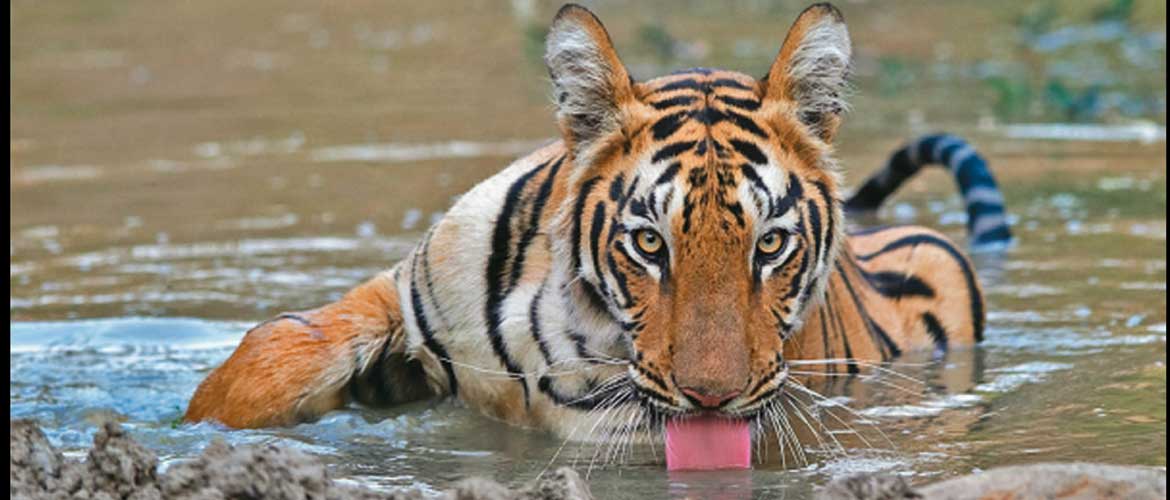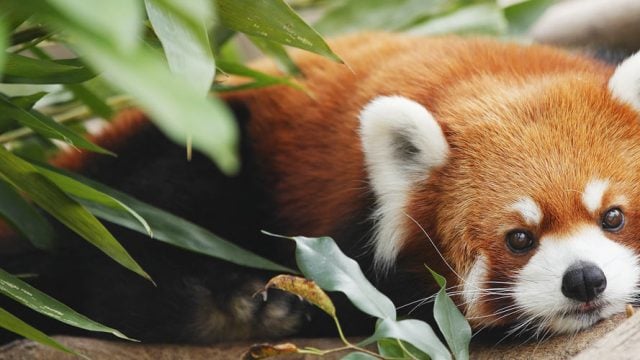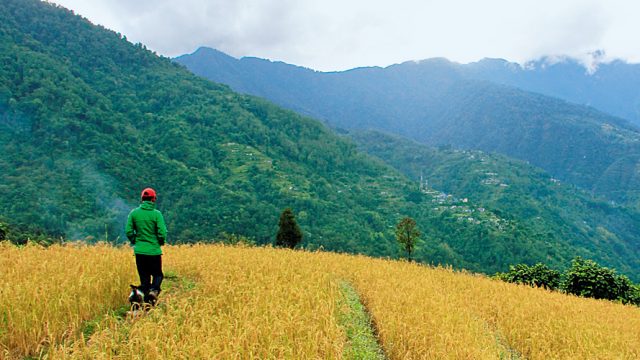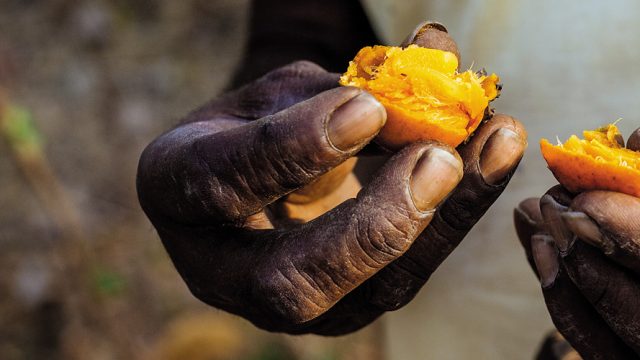The discordance between a national park in the northeast and its closest town is stark

Located on the border with Assam and covering an area of 862 sq km, Pakke was part of the Khellong Forest Division and was declared a game sanctuary in 1977. The sanctuary was later declared a Tiger Reserve in 2002. This relatively new tiger reserve has in the past witnessed rampant poaching and felling for a long time, but with commendable initiatives of the forest department and the local communities, the area has now seen considerable improvement. In September 2006, heads of 16 villages in the reserve area passed a resolution that listed penalties for wildlife violations, and this was followed up with villagers helping the Forest Department in keeping a strict vigil in the reserve. This innovative initiative, one of the first of its kind in India, is a marked departure from conventional top-down conservation practices. Emphasis here is on the local village chiefs, the Gaon Burahs of the Nyishi tribe, who command respect and play an influential role in persuading people towards sustainability and protection of the jungle and its inhabitants.
Pakke comes under the Eastern Himalaya Biodiversity Hotspot, and is home to over 2,000 species of plants, 300 species of birds, and over 30 species each of mammals, reptiles and amphibians. The reserve is also the last stronghold for many species of flora and fauna that are globally endangered. Notably it is the home of four hornbill species as well as the endangered white-winged wood duck. Other notable bird species that you are likely to spot on your birdwatching walks include the collared and long-tailed broadbills, white-browed shortwing, yellow-bellied flycatcher-warbler, crow-billed drongo, emerald cuccko, ibis bill, grey peacock-pheasant and many more.

The biggest draw among the mammals in Pakke is of course the tiger, but other major species include the leopard, leopard cat, Asiatic black bear, fishing cat, wild dog, barking deer, elephant, sambar and more. Perhaps more so than many reserves, Pakke has had a long, torrid history of poaching and animals close to being wiped out, but is on its way to recovery. Pakke is considered one the best performing tiger reserves in the Northeast. Camera trapping studies over the past few years have shown an increasing trend in tiger population and a rise in the sightings of tuskers, which had been completely decimated by poachers.
Entry ₹50 per day Vehicle Entry ₹500 per day Camera Still ₹100; DSLR ₹500
THINGS TO SEE AND DO
The Hornbill
It may take a day, or two, or you may be one of the unlucky ones, but the wait for the tiger is only matched by the wait to see a flock of hornbills for which Pakke is rightfully known. The reserve is home to not one but four species of hornbills: oriented pied hornbill, wreathed hornbill, rufous-necked hornbill and great hornbill. Of these, the wreathed and rufous-necked hornbills are considered vulnerable, while the great hornbill is near threatened status.

The Northeast has for a long time been the home of the hornbill, but with hunting and greater loss of habitat, most hornbill species are threatened. In this context, Pakke has stood apart as a haven for the hornbill. The Nyishi tribe has, traditionally, used the upper beak/casque of the great/rufous-necked hornbill as a part their traditional gear, the fat of the hornbill bird for its supposed medicinal value, as well as its meat. However, for over a decade now, the Nyishi community living around Pakke has come together with Forest Department to protect hornbills and their habitats.
The Nyishi community protects hornbill nests, imposes hefty and strict fines for hunting, cutting down of hornbill nest trees; they also promote the use of artificial fibre-glass hornbill casques to replace in their headgear. There are especially strict fines for those who hunt hornbills during the breeding season, March to August; this is because the death of the male will assuredly result in the death of the female and children in the nest tree cavity, since they are dependent on the male for their food supply.

In 2011, Nature Conservation Foundation, the Forest Department and the Ghore Aabhe Society set up the Hornbill Nest Adoption Programme, which engages, trains and employs Nyishis in finding, monitoring and protecting hornbill nests and roosts. Any person or organisation interested can become a Hornbill Parent by giving a yearly donation, and the money is used to pay a salary to the nest protectors and to provide field equipment. Through this programme, the organisations involved have not only protected hornbill nests and increased their counts, but by engaging both the locals and anyone else across the country and the world who may want to be involved, it has led to greater sustainability and education.

Jeep Safari
You can take a hired jeep or 4WD into the core area of the reserve with the prior permission of the Forest Department. Go up to the Khari Camp and beyond to another anti-poaching camp, manned by brave forest staff who rough it out in the wild to track and protect the animals from poachers. A jeep ride through the forest, or even getting down and walking on foot, can be tad bit disappointing when you’re away from the river, since the foliage throughout Pakke is so thick that visibility is less than 10 m at any given moment. For all you know, there are deer, or scarier to consider, bears and elephants, some 100 m away from the path, but there’s simply no way of seeing them. This is, in many ways, one of the banes of Pakke in terms of tourism potential, but seen in another light, it is the perfect antidote to the well-planned and nearly orchestrated ‘shows’ in tiger sanctuaries in central India, as well as the hustle and bustle associated with hundreds of tourists at Kaziranga. The thrill of not knowing if you and your group are the only living breathing beings in the vicinity adds a certain thrill to the concept of ‘wilderness’ that these national parks are meant to sell to tourists. So make the most of your day in the core area by looking up to see birds, listen for the rustle of leaves that might indicate the presence of deer and, if you see a lone elephant – run or drive away as fast as you can!
WHERE TO STAY AND EAT
Pakke Jungle Camp (Tariff: ₹3,500 per person, with meals) is a community-based tourism initiative implemented by the local conservation group Ghora Aabhe along with Help Tourism who also facilitate bookings (Kolkata Tel: 033-24550917, 24549719, Cell: 09733000442/443). The project has been set up with the support of the Forest Department at Pakke Tiger Reserve and Nature Conservation Foundation, an NGO based in Bengaluru. Collectively, the emphasis is both on greater tourism and awareness as well as community ownership. Located around 12 km past the Seijosa checkpoint, the jungle camp has four cottages, made in the local style on stilts and designed and constructed by local artisans using local products such as bamboo and thatch. Each hut has an attached bathroom as well as a small verandah. The food at the camp is homely and delicious, and will be just what the doctor ordered after a day of birdwatching and jeep safaris. All in all, the organisers at Pakke Jungle Camp provide a lovely jungle experience with just the right amount of comforts. The tariff is inclusive of all meals, but does include the daily guide fee of ₹1,000 per day. For more information, contact the Managing Director of Pakke Jungle Camp, Suresh Pait (Cell: 09402037005)
Or stay at the Forest Rest House located at the Khari Base Camp. Contact the Divisional Forest Office for rates and availability.
When to go: The best time to go to the park is between November and March. However, if you are a butterfly enthusiast, then the monsoon, especially the months of May and October, are the optimal months Location Pakke Tiger Reserve is located contiguous with Nameri National Park of Assam, lying just across the Assam-Arunachal state border at both Seijosa and Khari Air Nearest airport: Tezpur Rail Neaest rail: Soibari, Rangapara Station, Tezpur
Birding
East Himalaya Biodiversity Hotspot
Hornbills





